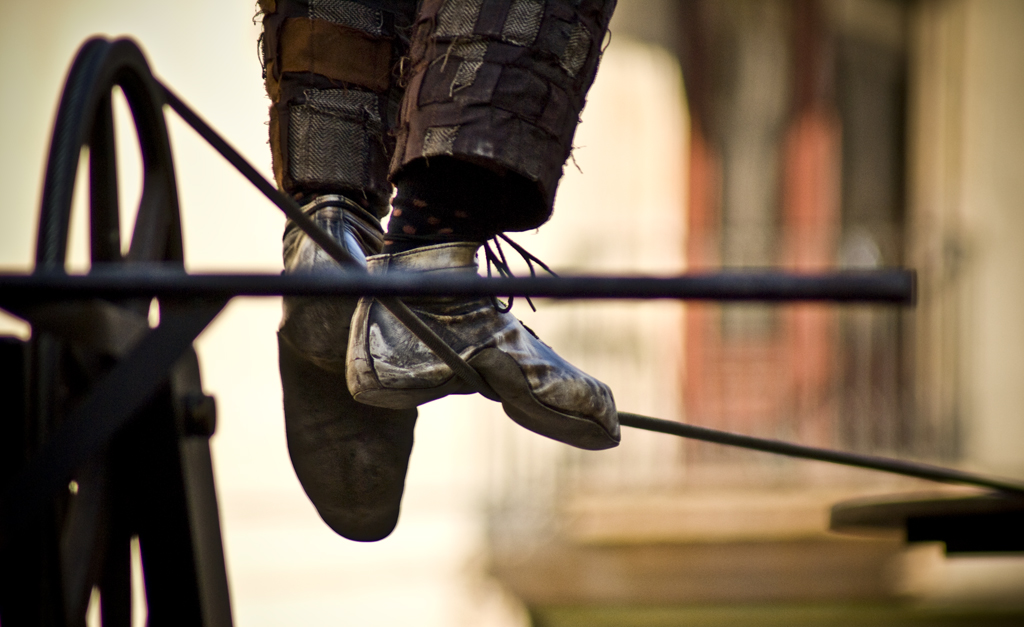Getting to the other side of this thin line is hardly the point. It would be much easier simply to walk on the ground beneath.
The risks are serious even if the rope isn’t very high off the ground.
If you’re only six inches off the floor, you’ll probably avoid physical injury if your feet slide off the rope. But falling isn’t on your mind, is it? You’re a pro, and as such you care about what the audience thinks about your performance on the rope. If you fall off the rope six inches above the floor you’ll probably be unharmed physically, but you’ll still have failed the fundamental requirement of the job.
As we all know, of course, tightrope walks generally take place in thinner air. Risks move from ordinary failure to ordinary mortality.
What happens if you make it from platform to platform without falling, but you flap and flail all the way? That’s better than most folks, of course; you’re still walking across a swaying rope, after all! But simple completion doesn’t confer success. Finesse matters; aesthetics matter. A successful tightrope walk must present a sense of ease, a sense of wonder, even a sense of humor if anyone is going to care about it. It must look easy! A successful tightrope walk implies competence in something deceptively challenging, easy for audiences to consume, spectacularly hard to execute with grace and artistry.
Everybody needs to eat. Everybody needs to sleep. Everybody needs to have a safe resting place, to breath clean air, to feel free in the world to be who they need to be. Nobody needs to walk a tightrope. Nobody. Life on the ground isn’t only safer, but it’s arguably more reasonable. Nonetheless, as soon as initial, essential conditions are met—food, safe sleeping spaces, clear air—someone invariably strings a wire from here to there and tries to walk its length.
Or…whatever.
If it’s not a tightrope, it might be performing a Chopin polonaise, or squeezing a few more horsepower out of that ’68 Camaro. Someone might want to figure out how to build a tiny satellite and make a profit doing it, and somebody else might want to run a marathon under two hours.
Nobody needs to do any of these things. But people keep trying. In fact, the stuff that’s hard to do is the stuff that people keep trying to do. Everyone? No, not everyone. But the people who make us pay attention, the people who inspire and invigorate and propel change are the ones who string a wire from here to there and try to cross the expanse with grace and artistry.
It’s almost as if there is a need to do these things.
The more that results matter, the more their execution have potentially serious costs. Performance and peril travel together. There’s limited peril to sitting on your couch eating pretzels watching Netflix, but there’s also limited utility. That said, not everyone wants to walk across the void, test gravity, test their nerves. What’s more, not every risky endeavor is a smart thing to do. Risk alone does not confer value.
But if you’ve decided to do something that does matter, you’ve decided to step off the platform and dare yourself not to freak out. You’re now a funambulist, and while you’re on the tightrope, there’s nothing else to do in the world but focus on the task at hand.

